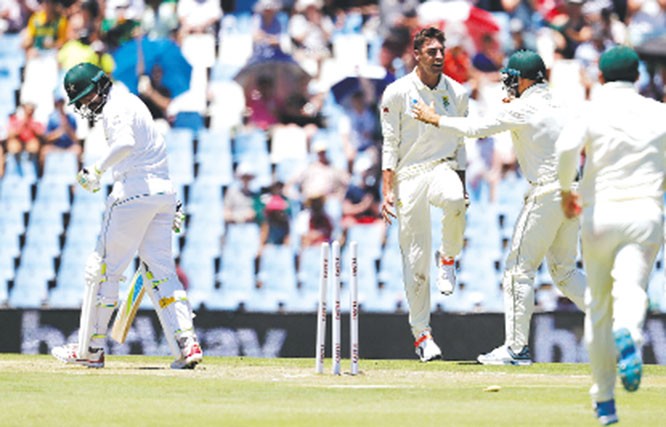
Professional cricketers should be ready to face every challenge. Unfortunately, Pakistani batters have time and again failed to do so

When Pakistan landed in South Africa for their three-match Test series last month, they were not favourites to win but it was expected they will fight because of their bowling variety and experienced batting.
But South Africa showed dominance from day one as Pakistani batsmen struggled against the pacers and the Proteas won the first Test by six wickets at Centurion.
Pakistani players should not blame conditions for the loss at Centurion. The pitch did not behave unexpectedly. Professional cricketers should be ready to face every challenge.
No team is as consistent in inconsistency as Pakistan. Drawing the series in England and beating Australia in the UAE had made fans expect that the Green-shirts will continue their winning streak against New Zealand and South Africa. But Pakistan lost the Test series against the Kiwis (2-1) in UAE and the first Test in South Africa.
Winning and losing is part of the game, but the way Pakistani batsmen threw their wickets was disappointing. They got out mostly behind the stumps. Handling short balls was very tough for them.
In the first Test at Centurion they choked against the biggest chokers of the game. After being bowled out for 181 in the first innings, Pakistan fought back with the ball and dismissed the hosts for just 223.
In the second innings, the tourists were in command with a match-winning lead when they were 101-1 in the second innings. But they got bowled out for 194 and gave the hosts a small target of 149, which they reached for the loss of four wickets.
This was not a one-off incident. Since 2016, Pakistan have lost 10 wickets in one day six times.
The story of Pakistan losing because of batting failure has been repeated time and time again. People know that the current Pakistani batsmen are not capable of competing at the Test level as they lack both temperament and technique, especially on fast bowler-friendly tracks.
It was a poor show from a bunch of talented but unorganised players who didn’t have any game plan to face the opponents in unfavourable conditions.
Most of Pakistan’s defeats occur because of the failures of the batsmen as Pakistan is no longer the Test team it used to be in the late eighties and early nineties.
Pakistan captain Sarfraz Ahmed admitted that his team’s batting had troubles in second and fourth innings of Tests.
"In the first Test, we got a good start but whenever one wicket fell, we were not able to take control of the match," he said.
The PCB must give priority to the batting side and provide opportunities to young, talented players from the domestic circuit and also initiate a talent-hunt scheme to overcome the batting woes under an experienced batting coach who can remove batsmen’s weaknesses.
Pakistan’s batsmen score 20, 30 runs easily but when they are set and can play big innings throw their wickets with stupid shots. Middle-order fragility has only become more acute since the retirements of veteran Younis Khan and Misbah-ul-Haq.
PCB appointed Grant Flower as batting coach in March 2014 and renewed his contract in 2016. But the question is: did batsmen improved their techniques and temperament under his coaching? Did they learn how to bat in unfamiliar conditions and handle pressure? The answer is a big no.
So what has the batting coach been doing for over four years? A good cricket coach is one who is good at team management and team strategy. He should know the weaknesses of his own players and the opponent teams apart from having multiple contingency plans.
He should motivate players to give optimum performances consistently. He should be a good thinker of the game and should be able to communicate effectively what he wants from the boys on the field. He should be able to handle the pressures of this high-profile job.
After the defeat in New Zealand early last year, chief Selector Inzamam-ul Haq also realised the problem. "Our batsmen are used to playing on slow, dry tracks of the UAE. They need to tour more often countries like Australia and New Zealand to get used to the conditions," he said.
But who will provide green top pitches to our players? The board and management are more responsible for this situation than the players themselves. What can a player do when he is not used to the conditions he faces at the international level?
The board never provides the opportunity to domestic players to play their trophy matches on fast and grassy tracks.
In the domestic matches, the batsmen score tons of runs as they face little bounce and hardly any movement.
Every country prepares its pitches according to its own team’s strength, but Pakistan is most unfortunate in this. We have had the services of the world’s most lethal fast bowlers – Wasim Akram, Waqar Younis, Shoaib Akhtar – and even now have Mohammad Amir, Mohammad Abbas, Hasan Ali and Shaheen Afridi at present, but the PCB hasn’t taken advantage of this.